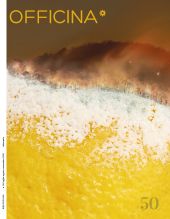Towards a paradigm shift for Refugee Camps
P. 22-31
Il campo profughi di Zaatari, istituito nel 2012 al confine settentrionale della Giordania, rappresenta un esempio emblematico di insediamento informale nato a seguito di flussi migratori forzati. Inizialmente concepito come una soluzione temporanea a una necessità emergenziale, si è rapidamente ampliato, trasformandosi in una comunità stabile. La sua evoluzione mette in luce le tensioni tra temporaneità e stabilità, tra interventi istituzionali e pratiche informali. Il passaggio dalle tende fornite dall'UNHCR a strutture più stabili, la realizzazione di infrastrutture e lo sviluppo di un'economia locale spontanea dimostrano come gli insediamenti temporanei tendano a stabilizzarsi nel tempo, sottolineando l'importanza di adottare modelli adattivi per affrontare le crisi umanitarie [Testo dell'editore].
Established in 2012 on Jordan's northern border, the Zaatari refugee camp is an emblematic example of an informal settlement created as a result of forced migration flows. Initially conceived as a temporary solution to an emergency, it quickly grew into a stable community. Its development highlights the tensions between temporariness and stability, between institutional interventions and informal practices. The transition from UNHCR-provided tents to more stable structures, the establishment of infrastructure, and the development of a spontaneous local economy demonstrate how temporary settlements tend to stabilize over time, underscoring the importance of adopting adaptive models to deal with humanitarian crises [Publisher's text].
39139 characters
Ist Teil von
OFFICINA* : 50, 2025-
Artikel aus derselben Ausgabe (einzeln erhältlich)
-
Informationen
DOI: 10.57623/2384-9029.2025.50.22-31
ISSN: 2384-9029
KEYWORDS
- Campi profughi, insediamenti auto-costruiti, pianificazione umanitaria
- Refugee camps, self-built settlements, humanitarian planning


